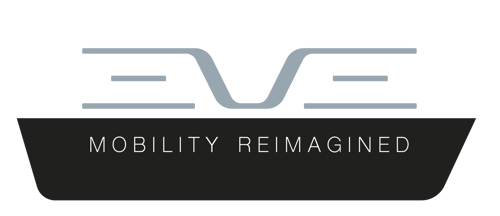Partners
Our Partnership
AtkinsRéalis
With a focus on integration, AtkinsRéalis will lead the consortium and is responsible for technical management and integration of the two-year programme as it moves AAM from concept stage towards implementation.
It will leverage its decades of aviation expertise to oversee the systems architecture and deliver a digitally enabled passenger journey management tool for infrastructure and flight operators.
For more information visit AtkinsRéalis

Vertical Aerospace
Vertical will deploy a VX4 from its flight test campaign to conduct the first AAM passenger demonstrations in the UK in 2024. Vertical will collaborate with the other consortium members to prepare the physical and digital infrastructure in the UK to accommodate the VX4 as part of a scalable, commercial AAM ecosystem.
The project demonstration flights are planned for Spring 2024, with Vertical expecting to receive full type certification and entering into service in 2025. Vertical Aerospace will be in constant dialogue with the UK CAA throughout this process to receive the necessary regulatory approvals to conduct the proposed missions.
For more information visit Vertical Aerospace


Skyports Infrastructure
Skyports Infrastructure will undertake the design, build and electrification of a new vertiport at a General Aviation (GA) airfield in London. The "Living Lab" vertiport will be utilised throughout the project for testing o ground operations and the customer journey. Operational missions with the Vertical Aerospace VA-X4 eVTOL aircraft will take place between the Skyports vertiport and Heathrow Airport.
The vertiport will be enabled by an efficient and reliable cloud capability, powering AAM ecosystem collaboration such as airspace integration with ANSP and UTM providers, passenger identity management, and resource management/scheduling systems integration with fleet operators. Skyports is also leading the creation of demand capacity models to understand the complexities of developing an initial UK network with various airport partners.
Find out more at Skyports Infrastructure
NATS
NATS is leading the airspace management part of the project, developing the technologies and processes that will be needed to integrate new airspace users, such as drones and electric air taxis, into UK airspace.
Using current airspace expertise, analysis and simulations, NATS will develop a concept of operations, in collaboration with the other consortium members, for safely integrating electric air taxis. The result will be a model for how UAM can be integrated into our airspace, and help airports, air navigation service providers, and other stakeholders to develop their systems and procedures ready for future UAM operations. This concept will then be used in simulations to test and validate processes and technology solutions prior to the real-world demonstrations towards the end of the project.
Find out more at NATS


Cranfield University
Cranfield University will be providing vertiport capacity modelling as part of the consortium.
Passenger expectations and behaviour will shape the infrastructure requirement for landing pads and vertiports. In this context the work will focus on the development of a highly integrated vertiport infrastructure to realise AAM, including all related support infrastructure such as landside access, aircraft parking and charging spots, gate areas for emplane and deplane, among others.
Echoing airspace operational constraints this part of the research will specifically investigate passenger processing areas and times, convenience and efficiency in relation to the establishment of AAM as a new service to the public. One critical aspect will be the allocation of vertiport services on air and landside in relation to security aspects along the journey and relevant access points at various downtown and suburban landing pads. Passenger throughput will be modelled with regards to vertiport size and spatial organisation, aircraft sizes, processing times, business rules and regulatory requirements, along with certain prioritisation schemes potentially under a collaborative decision-making mechanism.
Cranfield will also provide the schedule & resource management optimisation component. Which will develop an integrated scheduling service to realise airspace/vertiport resource management, including arrival and departure management (AMAN/DMAN) types of applications, as well as assignment of parking and charging spots, gates for emplane and deplane, among others. Operational constraints such as aircraft capabilities, business rules and regulatory requirements will be modelled, along with certain prioritisation schemes potentially under a collaborative decision-making mechanism.
Find out more at Cranfield University
WMG, University of Warwick
As part of the consortium, WMG, at the University of Warwick, an internationally leading R&D organisation in Energy and Battery research, brings many years of experience of developing advanced battery systems and electric machines for automotive and aerospace industries, and other sectors.
In this project, WMG’s team is working in particularly close collaboration with Vertical Aerospace, to integrate a smart-diagnostic functionality to the VX4 aircraft battery system. This will enable battery state of safety assessment prior to the test flights, and expand its fast charging capability to enable fast turn-around time during operation. In tandem, WMG ‘s work will also illustrate the need for advanced aerospace battery management systems (BMS), and for specifying the BMS requirement to enable an enhanced, smart BMS functionality, critical for aerospace applications.
Find out more at WMG


Heathrow
Britain's largest cargo port and one of the world's top aviation hubs, Heathrow has agreed to support one of the consortium's key test flights by 2024. Which, along with test flights to Bristol and London City Airports, will allow the consortium to research and take learnings from operating different airport environments.
Find out more Heathrow
Bristol Airport
As England's third largest regional airport and acting as the primary gateway to the South West and South Wales, Bristol Airport has taken a pioneering role on sustainability with a target to achieve net zero operations by 2030 and is working with partners to accelerate the decarbonisation of flight.
Bristol Airport are supporting the creation of a demonstration environment within the region for eVTOL aircraft and will play a critical role in the evaluation of the integration and impact on the wider transportation network.
Find out more at Bristol Airport


London City Airport
London City Airport will act as the destination of the final demonstration flight.
This third mission will digitally simulate a flight between Bristol Aiport and London City Airport to test airspace integration of longer inner-city airpotr connectivity.
Find out more at London City Airport
Connected Places Catapult
Connected Places Catapult is supporting the project management of the programme on behalf of the consortium; performing an impact and benefits assessment to assess the wider economic, social and environmental benefits of the proposed service to the local area and the UK; developing a multi-model transport demand model for the service; and supporting the community engagement.
Find out more at Connected Places Catapult

Supporting Stakeholders

EVE Air Mobility
The consortium will also be supported by EVE Air Mobility as an unfunded partner, working closely with Skyports Infrastructure and NATS to incorporate the use of Eve's vertiport and fleet operator software into the project as part of the integration into the wider aviation ecosystem.